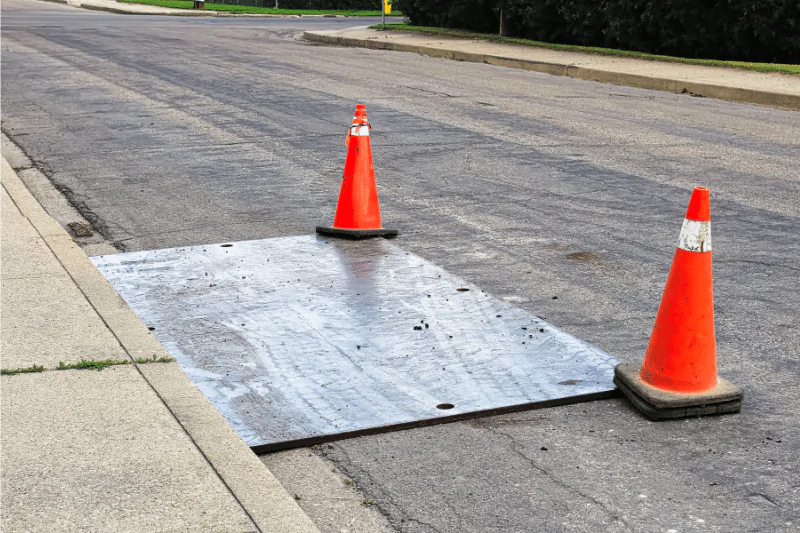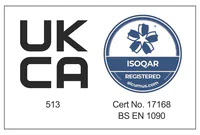Steel road plates are heavy – our smallest 6′ x 4′ standard size weighs over 100kg at 0.25 inches thick – which helps to make sure they stay in position when they are first laid down.
But if you want to ensure your steel road plates stay where they are, as well as to allow pedestrian and vehicle traffic to pass safely over them, it’s a good idea to secure them into place. You can view our road plate sizing guide here.
You can do this using the pre-drilled fixing holes, which also allow lifting equipment to be used to move the plates into position, and avoid manual heavy lifting.
In general there are two common methods to secure steel road plates, and either may be preferable depending on the nature of the job site and whether public access is required.
Pinning
Pinning is exactly as the name suggests. Strong pins are inserted through the pre-drilled holes and into the road, pavement or other surface.
This is one of the easiest methods to secure steel road plates into all kinds of surfaces. Solid ground like tarmac can be drilled to create a fixing hole for the pins to be inserted into.
By using pinning through the pre-drilled holes, there should be no damage to the road plates, allowing them to be reused many times over before they need to be replaced.
Recessing
Recessing involves fitting the road plate into an equivalently sized and shaped recess in the road surface, so that it lays flush and cannot slip to the side.
There are two ways to do this: either the road surface can be etched away to create a recess the size of the road plate, or for smaller jobs, the steel plate may be cut to the right size and shape.
Benefits of recessing include the ability to create a flush and smooth surface, although cutting the plates can affect their long-term reusability.
Which method to use?
Pinning is often the easiest option. The fixing holes are already drilled in our steel road plates, and we can drill additional holes by request, if you need to meet specific needs.
It’s also the best option for long-term reuse, as you don’t need to cut your road plates down to size. Thinner road plates should not create a significant obstacle when pinned down, as the step will be less than an inch.
Recessing can be good on longer-term projects where you want a flush surface. You can even combine recessing with pinning the plate into the recess, for maximum security.
If you have any interest in further discussing our road plates or any of our associated services or products, please don’t hesitate to get in touch and we will be happy to help.


